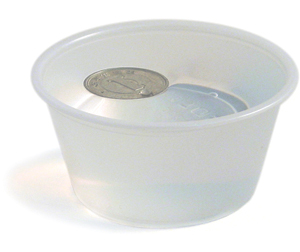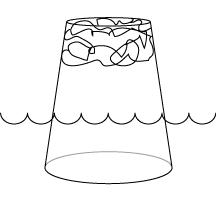Who knew that a single coin could be used for so many classroom science activities! You can demonstrate concepts such as surface tension, buoyancy, and even eddy currents with Japanese yen coins!
Surface Tension: Even though aluminum has a density of 2.7 gm/cm3, and the density of water is 1 g/cm3, aluminum yen coins can float on the surface of the water!
Surface tension is a physical property of water. It is caused by cohesion, which is the attraction of like molecules. Water molecules are made up of two hydrogen atoms and one oxygen atom. The “stickiness” of water is caused by hydrogen bonding. This hydrogen bonding pulls the water molecules towards one another and forms a sort of “skin” on the surface of the water.
Japanese Yen Coins Experiment 1:
 Using a bent paper clip or a plastic fork, gently lower the flat side of the coin onto the surface of a pan or cup of water and remove the clip or fork. The coin should rest on the surface of the water. Read the rest of this entry »
Using a bent paper clip or a plastic fork, gently lower the flat side of the coin onto the surface of a pan or cup of water and remove the clip or fork. The coin should rest on the surface of the water. Read the rest of this entry »




 Posted by Tami O'Connor
Posted by Tami O'Connor  by: Tami O’Connor
by: Tami O’Connor push the plastic cup into a clear container of water so the cup is completely submerged. Your students should be able to see that, although the air is somewhat compressed within the cup, the paper at the “top” of the cup remains dry.
push the plastic cup into a clear container of water so the cup is completely submerged. Your students should be able to see that, although the air is somewhat compressed within the cup, the paper at the “top” of the cup remains dry.